#leupp
Explore tagged Tumblr posts
Text
We visited a rather interesting place today - Old Leupp, formerly the Leupp Isolation Center, near the modern town of the same name.
In truth, there isn't much to see. One nasty old gravel road, a few long-abandoned buildings, and the overgrown outer extremes that formerly housed Japanese inmates, guards, and staff, an old well. Leupp isn't even marked as a historical sight with the placards or stones we've seen at every other tourist trap or park we've stopped at. We don't WANT to remember places like this - the detainment centers remind us of darker times, just like the assimilationist "boarding school" that harmed indigenous people and families prior to it being converted into a prison. They are dark spots in US History, already riddled with stains and infamy.
Yet we have to remember what was done to the people brought and kept in these places. We cannot forget that our country's government did evil things because of bigotry, and that bigotry never went away. So we wanted to show you this wasteland ruin. Scars of stories we do not hear enough of, left to rot. Never again can we allow it. Photos courtesy of @naomi-no-kimi and @circeofjagd










#radio nowhere#travel#arizona#serious#leupp#us history#japanese internment#navajo boarding schools#bigotry
1 note
·
View note
Text

#Trick#Christian Campbell#John Paul Pitoc#Tori Spelling#Lorri Bagley#Brad Beyer#Steve Hayes#Clinton Leupp#Jim Fall#1999
12 notes
·
View notes
Text
google am i in too deep when i start using my actual university library to conduct research for my anime boy fic???
#i dont even do that for my ACTUAL history degree mind you#shoutout to male colours: the construction of homosexuality in tokugawa japan by gary leupp#bokuaka gets fucking serious for me#thoughts
2 notes
·
View notes
Text
I’m re-reading Male Colors for the first time in a couple years for Bleach fic and how HOW H O W did I miss that Jizō as a deity was heavily associated with homosexuality.
Was my bleach brain turned ALL the way off in my first read????? Unacceptable! Highlighter has been activated! Marinating as we speak!!
#I love Gary Leupp because he makes even just listing shit highly readable#I will read the driest text known to mankind but he kissed my forehead and said#no my child. ye shall not suffer today#reading at work because I’ve earned it ❤️#Shutara 🫸🫷Mayuri being monastic theater kids#they don’t like each other enough to grasp hands#to be fair to myself I was pile driving through history books a couple years ago#now I’m taking my time for Bleach Brain#all my Yoshiwara texts vary from highly readable to eye watering#so this is a nice break#because the eye watering books out number
2 notes
·
View notes
Text

Girls Will Be Girls (2003) directed by Richard Day
#girls will be girls#varla jean mermon#miss coco peru#evie harris#jack plotnick#clinton leupp#jeffery roberson#queer cinema#gay films#currently watching
1 note
·
View note
Text
Why Gay Sex is Dialectic, an Essay
As a petite proletariat (twink) who reads theory, I was pondering the nature of homosexuality in terms of dialectical materialism, in particular, how gay sex fit into Engel's three laws of dialectics.
Just as Engels posits that internal contradictions or tensions drive change in the law of unity and conflict of opposites, the same could be said for the homoerotic tension of a top-bottom relationship. While tops and bottoms appear to exist as binary oppositional roles, they coexist internally within a relationship. While the duality may give rise to differences in preferences, desires, and dynamics these differences can be resolved through negotiation between the partners. The act of say gex, is thus, the ultimate act of such negotiation, a synthesis of contradictions.
Furthermore, the law of the passage of quantitative changes into qualitative changes could be seen the complications to that top-bottom dynamic. The roles of tops and bottoms can be redefined through the process of negotiation. In fact, surveys from Autostraddle [1] show that the majority of people in a gay relationships are switches, not strictly tops or bottoms. This indicates that the physical designation of top or bottom is thus the result of an accumulation of decisions and preferences, culminating in the qualitative dynamic. This is exemplified by the ways in which masculine-feminine attributes or sub-dom dynamics play a role in gay sex — these attributes, which can be seen as mostly qualitative assignations are the result of the accumulation of quantitative changes.
I would further propose that, through the collaborative dialectic process of negotiation, the social dynamics of gay relationships can change, including that top-bottom dynamic. Engel's law of the negation of the negation captures these changes precisely. The traditional associations between masculinity and feminity, subordination and domination are, to an extent, being subverted in many 21st gay relationships in contrast to the strict gender roles seen in Greco-Roman times [2] or the Tokugawa period [3]. For example, I want a femboy to top me. Whether through the process of resolving contradictions in homosexual intercourse, the top-bottom dynamic or between other qualitative attributes, the process of negation and transformation dialectically results in a more egalitarian understanding of say gex. This is the socialist means of reproduction.
In conclusion, gay sex is praxis.
[1] Riese. “Tops, Bottoms, Switches: One Last Look at All the Survey Data.” Autostraddle, 7 Aug. 2018, www.autostraddle.com/tops-bottoms-switches-one-last-look-at-all-the-survey-data-424953/. Accessed 3 Mar. 2024.
[2] Hubbard, Thomas K. Homosexuality in Greece and Rome : A Sourcebook of Basic Documents. Berkeley, Univ. Of California Press, 2010.
[3] Leupp, Gary P. Male Colors : The Construction of Homosexuality in Tokugawa Japan. Berkeley, University Of California Press, 2011.
188 notes
·
View notes
Text







The first major solo museum presentation of fourth-generation Navajo weaver Melissa Cody (b. 1983, No Water Mesa, Arizona) spans the last decade of her practice, showcasing over 30 weavings and a major new work produced for the exhibition. Using long-established weaving techniques and incorporating new digital technologies, Cody assembles and reimagines popular patterns into sophisticated geometric overlays, incorporating atypical dyes and fibers. Her tapestries carry forward the methods of Navajo Germantown weaving, which developed out of the wool and blankets that were made in Germantown, Pennsylvania and supplied by the US government to the Navajo people during the forced expulsion from their territories in the mid-1800s. During this period, the rationed blankets were taken apart and the yarn was used to make new textiles, a practice of reclamation which became the source of the movement. While acknowledging this history and working on a traditional Navajo loom, Cody’s masterful works exercise experimental palettes and patterns that animate through reinvention, reframing traditions as cycles of evolution. Melissa Cody is a Navajo/Diné textile artist and enrolled member of the Navajo/Diné nation. Cody grew up on a Navajo Reservation in Leupp, Arizona and received a Bachelor’s degree in Studio Arts and Museum Studies from Institute of American Indian Arts, Santa Fe. Her work has been featured in The Barnes Foundation, Philadelphia (2022); Crystal Bridges Museum of American Art, Bentonville, AR (2021); National Gallery of Canada, Ottawa (2019–2020); Museum of Northern Arizona, Flagstaff (2019); SITE Santa Fe (2018–19); Ingham Chapman Gallery, University of New Mexico, Albuquerque (2018); Navajo Nation Museum, Window Rock (2018); and the Museum of Contemporary Native Arts, Institute of American Indian Arts, Santa Fe (2017–18). Cody’s works are in the collections of the Stark Museum of Art, Orange, Texas; the Minneapolis Institute of Arts; and The Autry National Center, Los Angeles. In 2020, she earned the Brandford/Elliott Award for Excellence in Fiber Art.
Melissa Cody: Webbed Skies currently on exhibition at MoMA PS1 through September 9nth, 2024
IDs Under the cut
Top to Bottom, Left to Right: White Out. 2012. 3-ply aniline dyed wool. 17 × 24″ (43.2 × 61 cm)
Deep Brain Stimulation. 2011. Wool warp, weft, selvedge cords, and aniline dyes. 40 x 30 3/4 in. (101.6 x 78.1 cm)
World Traveler. 2014. Wool warp, weft, selvedge cords, and aniline dyes. 90 x 48 7/8 in. (228.6 x 124.1 cm)
Into the Depths, She Rappels. 2023. Wool warp, weft, selvedge cords, and aniline dyes. 87 x 51 9/16 in. (221 x 131 cm)
Lightning Storm. 2012. 3-ply aniline dyed wool. 14 × 20″ (35.6 × 50.8 cm)
Pocketful of Rainbows. 2019. Wool warp, weft, selvedge cords, and aniline dyes. 19 x 10 3/4 in. (48.3 x 27.3 cm)
Path of the Snake. 2013. 3-ply aniline dyed wool. 36 × 24″ (91.4 × 61 cm)
73 notes
·
View notes
Note
Ah meant scholarly sources, I have read your posts (well written!) but not watched the videos (it is hard for me to focus on sound). :) thank you
Hey anon, based on your previous ask and this one, here are some scholarly sources that I have saved on the computer I am currently using. [I have more on another computer which I will be able to share those in a week or so. Done!]
How to access these sources?
[For context: 'Problematizing the Problem' section of my post Seme/uke - long response is being discussed and scholarly sources are for the questions (given below) I raised.]
Why would ‘het people’ or any people for that matter think in terms of male-female / masculine-feminine binaries? Do they think in those binaries only and not other binaries such as wen(文)-wu(武)? Why think in binaries and dichotomies at all? Don’t they not think in terms of multiplicity of genders/gender expressions such as various kinds of masculinities and femininities) based off on their local contexts?
Do queer people not make such/similar conflations? (Hint: they do.)
Is it a problem? While this seems to be the popular notion, plenty of scholars from across the globe has dismantled it.
I must admit that this was written following The Right Way to Be Gay - Who Can Tell? in a manner in which these questions would be treated as already answered. When read as a stand-alone, these questions would remain as food for thought at best.
seme uke - Japan
Cartographies of Desire: Male-male Sexuality in Japanese Discourse, 1600-1950 - Gregory M. Pflugfelder
Reimagining male-male sexuality: representations in Japanesemodern literature and gay manga by Nicholas James Hall
The Great Mirror of Male Love - Saikaku Ihara, Paul Gordon Schalow (translator)
Male Colors: The Construction of Homosexuality in Tokugawa Japan - Gary Leupp
In the Company of Men: Representations of Male-Male Sexuality In Meiji Literature by Jim Reichert (199-208)
different takes on queerness from across the globe - LGBTQ+ and others:
Between Men, part of the ‘Key Population Series’, 2003 [link]
Hames, Raymond B.; Garfield, Zachary H.; and Garfield, Melissa J., “Is Male Androphilia a Context-Dependent Cross-Cultural Universal?” (2017). Anthropology Faculty Publications. 132.
Lambevski, S.A., 1999. Suck my nation - masculinity, ethnicity and the politics of (Homo) sex. Sexualities, 2(4), pp.397-419.
Interpretation and Orientalism: Outing Japan’s Sexual Minorities to the English-Speaking World by Mark McLelland
Aneka, B. (2014). Jogappa: Gender, Identity and the Politics of Exclusion.
Stief, M. (2017). The sexual orientation and gender presentation of hijra, kothi, and panthi in Mumbai, India. Archives of Sexual Behavior, 46, 73-85.
Gill, H. (2016). Kothi. The Wiley Blackwell encyclopedia of gender and sexuality studies, 1-2.
Hossain, A., & Rahman, M. (2024). Beyond homocolonialism: working towards queer decoloniality in Bangladesh. International Politics, 1-16.
different types of masculinities and femininities and queer people (conflations, adaptations, etc.):
Wijngaarden JW de L van. Male Homosexuality in 21st-Century Thailand: A Longitudinal Study of Young, Rural, Same-Sex-Attracted Men Coming of Age. Anthem Press; 2021. [link] [link]
Polmuk, C. (2023). Provincialising Thai Boys Love: Queer Desire and the Aesthetics of Rural Cosmopolitanism. [link]
Vasudevan, A. (2024). From Deficient Masculinity to Relational Plenitude: Language and Ethics among Thirunangai s in Southern India. Men and Masculinities, 27(4), 392-409.
Bakshi, K. (2022). Writing the LGBTIHQ+ movement in Bangla: emergence of queer epistemologies in Kolkata in the early days of queer political mobilizations. South Asian History and Culture, 13(2), 231–245. https://doi.org/10.1080/19472498.2022.2067636
Halkitis, Perry N., '(Hyper) Masculinity', Out in Time: The Public Lives of Gay Men from Stonewall to the Queer Generation (New York, 2019; online edn, Oxford Academic, 20 June 2019), https://doi.org/10.1093/oso/9780190686604.003.0007
Kong, T.S.K. (2010). Chinese Male Homosexualities: Memba, Tongzhi and Golden Boy (1st ed.). Routledge. https://doi.org/10.4324/9780203849200
Wang, S. (2020). Chinese gay men pursuing online fame: erotic reputation and internet celebrity economies. Feminist Media Studies, 20(4), 548–564. https://doi.org/10.1080/14680777.2020.1754633
in relation to yaoi and BL:
Nagaike, K. (2012). Perverse sexualities, perverse desires: representations of female fantasies and Yaoi manga as pornography directed at women. In Fantasies of Cross-dressing: Japanese Women Write Male-Male Erotica (pp. 103-134). Brill.
Yaoi Ronsō: Discussing Depictions of Male Homosexuality in Japanese Girls' Comics, Gay Comics and Gay Pornography Wim Lunsing
Williams, A. (2015). Rethinking yaoi on the regional and global scale. Intersections: Gender and Sexuality in Asia and the Pacific, 37.
Pužar, A. (2023). " BL"(Boy Love)," GL"(Girl Love) and Female Communities of Practice and Affect in South Korea. Družboslovne razprave, 39(102), 63-84.
Mizoguchi, A. (2008). Reading and living Yaoi: Male-male fantasy narratives as women's sexual subculture in Japan. University of Rochester.
Kristine Michelle L. Santos (2020) The bitches of Boys Love comics: the pornographic response of Japan’s rotten women, Porn Studies, 7:3, 279-290, DOI: 10.1080/23268743.2020.1726204
-
In a recent post @dragonsandphoenix mentioned ‘Homoerotic Sensibilities in Late Imperial China’ by Wu Cuncun. I haven't read it but, it sure looks interesting.
-
Update! Sorry, it is unsorted.
Kazumi Nagaike - Perverse Sexualities, Perversive Desires: Representations of Female Fantasies and "Yaoi Manga" as Pornography Directed at Women [https://www.jstor.org/stable/42771904]
Akiko Mizoguchi - Male-Male Romance by and for Women in Japan: A History and the Subgenres of "Yaoi" Fictions [https://www.jstor.org/stable/42771903]
Mark J. McLelland - Japan’s Original Gay Boom [https://ro.uow.edu.au/artspapers/145]
McLelland, Mark J., Salarymen Doing Queer: Gay Men and the Heterosexual Public Sphere in Japan 2005. https://ro.uow.edu.au/artspapers/156
McLelland, Mark J., Salarymen Doing Queer: Gay Men and the Heterosexual Public Sphere in Japan 2005. https://ro.uow.edu.au/artspapers/156
McLelland, Mark J., Interpretation and Orientalism: Outing Japan's Sexual Minorities to the English-Speaking World 2003. https://ro.uow.edu.au/artspapers/152
Himanshi Singh and Pradeep Kumar - Hijra : An Understanding https://doi.org/10.32381/JPR.2020.15.01.6
Bithika Mondal , Sudeshna Das , Deepshikha Ray , and Debanjan Banerjee - “Their Untold Stories…”: Lived Experiences of Being a Transgender (Hijra), A Qualitative Study From India [DOI: 10.1177/2631831820936924]
Edited by Mark McLelland, Kazumi Nagaike, Katsuhiko Suganuma, and James Welker - Boys Love Manga and Beyond
Thomas Baudinette - Japanese gay men’s attitudes towards ‘gay manga’ and the problem of genre - doi: 10.1386/eapc.3.1. 59_1
Jungmin Kwon – Straight Korean Female Fans and Their Gay Fantasies
Narupon Duangwises and Peter A. Jackson - Effeminacy and Masculinity in Thai Gay Culture: Language, Contextuality and the Enactment of Gender Plurality - https://so06.tci-thaijo.org/index.php/wjss
Kristine Michelle L. Santos (2020): The bitches of Boys Love comics: the pornographic response of Japan’s rotten women, https://doi.org/10.1080/23268743.2020.1726204
Yanrui Xu & Ling Yang (2013) Forbidden love: incest, generational conflict, and the erotics of power in Chinese BL fiction - https://doi.org/10.1080/21504857.2013.771378
Divya Garg & Xiaofei Yang (14 Feb 2024): Beyond a queer utopia: interrogating misogyny in transnational boys love media https://doi.org/10.1080/10304312.2024.2314186
Bret Hinsch – Passions of the Cut Sleeve
Kristine Michelle L. Santos (2020): Queer Affective Literacies: Examining “Rotten” Women’s Literacies in Japan - https://doi.org/10.1080/02560046.2020.1825506
Tomoko Aoyama - BL (Boys’ Love) Literacy: Subversion, Resuscitation, and Transformation of the (Father’s) Text - DOI: 10.1353/jwj.2013.0001
Jungmin Kwon - The past, present, and future of Boys Love (BL) cultures in East Asia [Transnational Convergence of East Asian Pop Culture - Edited by Seok-Kyeong Hong and Dal Yong Jin]
Sulaiman TK 2017 - Sexuality Landscape of Modern Kerala: A Discourse on Male Social Gathering among Malabar Muslim Men
Filippo Osella - Malabar Secrets: South Indian Muslim Men's (Homo)sociality across the Indian Ocean - http://www.tandfonline.com/loi/casr20
Caroline and Filippo Osella - Men and Masculinities in South India
Lothar Filip Rudorfer (2023) - Homosexuality and Bara Manga in Japan – Representation of the Psychological State of Mind of the Contemporary LGBT+ Plus Size Men in Japan
Chapter 5 (Exploring Yaoi Fans’ Online Practices in an Online Community by Simon Turner) and Chapter 6 (An Evaluation of Physicality in the Bara Manga of Bádi Magazine by Thomas Baudinette) of Manga Vision – edited by Sarah Pasfield-Neofitou and Cathy Sell
Celia Rose Langford (2019) - Queered Time on the Page: The Micro-level Revolution of the Bishōnen in 21st Century Yaoi Manga
Febriani Sihombing - On The Iconic Difference between Couple Characters in Boys Love Manga – 2011
William S. Armour (2010) Representations of the Masculine in Tagame Gengoroh's Ero SM Manga - https://doi.org/10.1080/10357823.2010.527922
Zhang Yiyuan - Repressed Sexuality — Disguised Masculinity in Chinese Danmei Adapted Series – 2023
Poramate Parnpiamkiat - Expectation of Fans Towards Thai Boys’ Love Celebrity Couples (2019)
Poowin Bunyavejchewin, Kornphanat Tungkeunkunt, Porntep Kamonpetch, Ketsarin Sirichuanjun & Natthanont Sukthungthong (2024) Socio-demographics, lifestyles, and consumption frequency of Thai ‘Boys Love’ series content: Initial evidence from Thailand https://doi.org/10.1080/23311886.2024.2307697
Charlie Yi Zhang & Adam K. Dedman (2021) Hyperreal homoerotic love in a monarchized military conjuncture: a situated view of the Thai Boys’ Love industry https://doi.org/10.1080/14680777.2021.1959370
Xi Tian - Homosexualizing “Boys Love” in China DOI 10.1215/25783491-8163817
Aiqing Wang - Nonnormative Masculinity In Danmei Literature: ‘Maiden Seme’ And Sajiao https://doi.org/10.17572/mj2021.1.106123
Travis S. K. Kong - Sexuality and the rise of China : the post-1990s gay generation in Hong Kong, Taiwan, and mainland China (2023)
Junqi Zhang - The Reception of Thai Boys Love Series in China: Consumption, Imagination, and Friction (2021)
Joanna Elfving-Hwang - Not So Soft After All: Kkonminam Masculinities in Contemporary South Korean Popular Culture (2011)
Dredge Byung’chu Kang-Nguyen - The Softening of Butches The Adoption of Korean "Soft" Masculinity among Thai Toms http://www.jstor.com/stable/j.ctv7r429w.7
Ying-Chao Ka - The coloniality of queer theory: The effects of “homonormativity” on transnational Taiwan’s path to equality https://doi.org/10.1177/13634607211047518
Sandeep Bakshi. On Decolonising Queerness with Dr Sandeep Bakshi. 2023 https://hal.science/hal-04183158
Adam Chen-Dedman - Tongzhi Sovereignty: Taiwan’s lgbt Rights Movement and the Misplaced Critique of Homonationalism [ doi: 10.1163/24688800-20221267 ]
#japanese bl#thai bl#danmei#chinese bl#taiwanese bl#korean bl#seme/uke#boys love#queer#gay#queer culture#queer plurality
14 notes
·
View notes
Text
It's funny how ss fans can be wrong even when they are... right. Yes, I'm not contradicting myself.
As you all can see thanks to the pics I posted, one of them was "talking" (read: whining) about how ss has mythology references as well.
Well, I won't denying it.
Saying otherwise could be 1. false, 2. wrong, 3. hypocrite, 4. honestly against my very line of work.
However, I would like to point out something:
Ninigi has, indeed, similiarities with Sasuke, such as:
a. his "connection" with Amaterasu
b. kusanagi
c. he will marry Sakura
But. The similiarities end here.
Now, that could be hardly casual given Kishimoto's clear knowledge of mythology, history and literature; however, aside from the marriage and the sakura flower, the similiarities between Sakura and Sakuya-hime, instead, stop here.
Thinking he could have used this specific, eventual, references to mark Sasuke and Sakura's relationship as a romantic one is ontologically wrong.
Why? For the genericity of the references, obviously.
Amaterasu and Kusanagi are two milestones of Japanese mythology and one can find them in several legends, related to very different characters.
Secondly, the comparison between Sakura and Konohana Sakuya-hime isn't flattering.
She was the usual empty, batshit crazy woman who burned the hut with their children inside to prove she didn't cheat on him.
You can find it in every, single, version of the myth. The girl was not fine.
The usage of fire as well: great, really, but a fuckton of japanese deities are fire-repellent, so it's like to say... nothing spectacular?
Now, about the "sources" they shared:
Aside from the one pic with Kaguya (totally out of the blue, I would say, given I only stated sun and moon symbolism are often associated with sexual intercourses or lovers), we have:
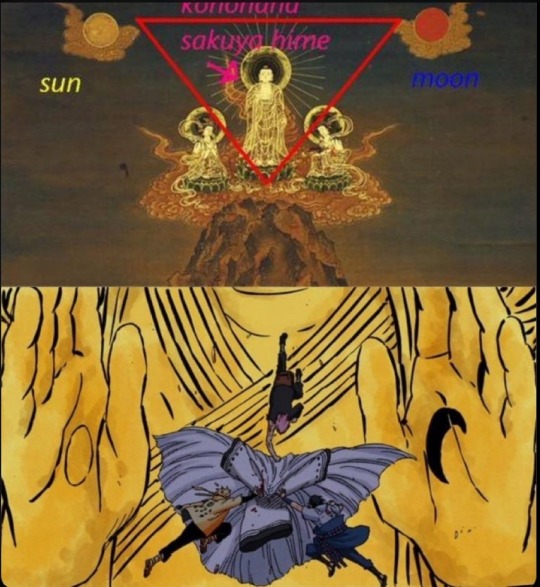
- Sakura and Sasuke's name on the sand (probably written by Sakura, don't know why this is relevant.
- Sasuke with kusanagi (that's okay) and snakes: here the snakes are clearly the focal point. But why? Was Ninigi associated with snakes?
- The cover with Sakura wearing a sakura-flowered dress and while holding the Uchiwa fan.
The last one specifically is... interesting because: where is the deep references? The flowers? That's the girl's name. The fan? It seems more like another sign of Sakura crushing on Sasuke and writing "Sakura Uchiha" on her notebook while giggling.
So, the point is:
If you want to make an analysis you need:
1. real sources (not photos already crafted to prove your ss point) - btw, I gave actual books, but they refused to take them in consideration;
2. to use images consistently.
Here a summarised analysis:
Shinjū is a Japanese term meaning "double suicide". Lovers committing double suicide believed that they would be united again in heaven. It was also possible for lovers to commit a murder-suicide (muri-shinjū).
This is a clear example of Shinjū's reference:

Here, we have:
- the will to die together
- the hope they will meet again in the afterlife
- the "connection of hearts" (from the very term's meaning and the context)
Here the sources:
1. Becker, Buddhist Views of Suicide and Euthanasia, Philosophy East and West
2. Takahashi, Cultural dynamics and the unconscious in suicide in Japan
3. Leupp, Male Colors: The construction of homosexuality in Tokugawa Japan
4. Heldt, Between followers and friends: male homosocial desire in Heian Court Poetry
5. Saikaku Ihara, Love of Comrades
6. Saikaku Ihara, The Great Mirror of male love
7. Rogers, She loves me, she loves me not. Shinju and Shikido Okagami
8. Heine, Tragedy and Salvation in the Floating World
THIS is a sensible reference. And a very small analysis.
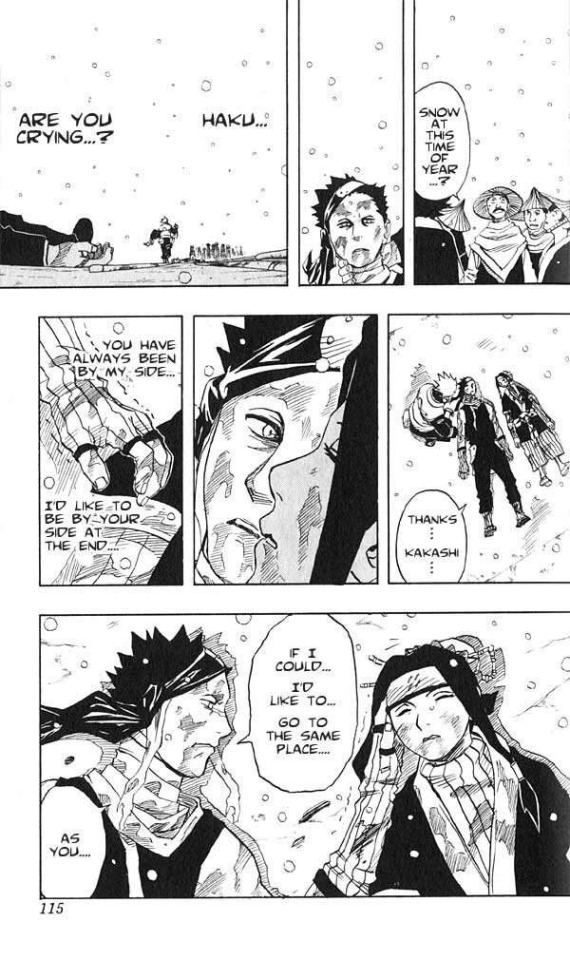
And a parallelism.
Bye :)
PS Tumblr fucked up the pics order (sorryyyy)
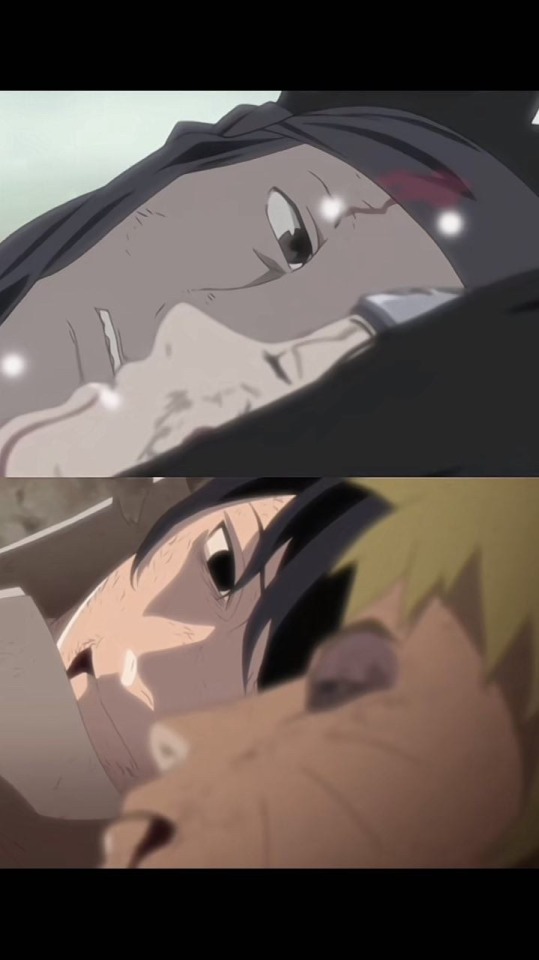


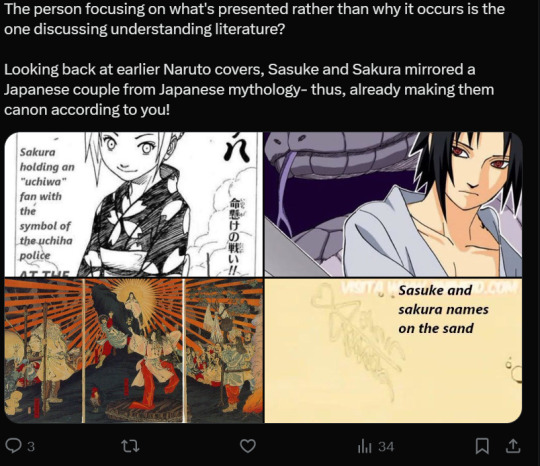
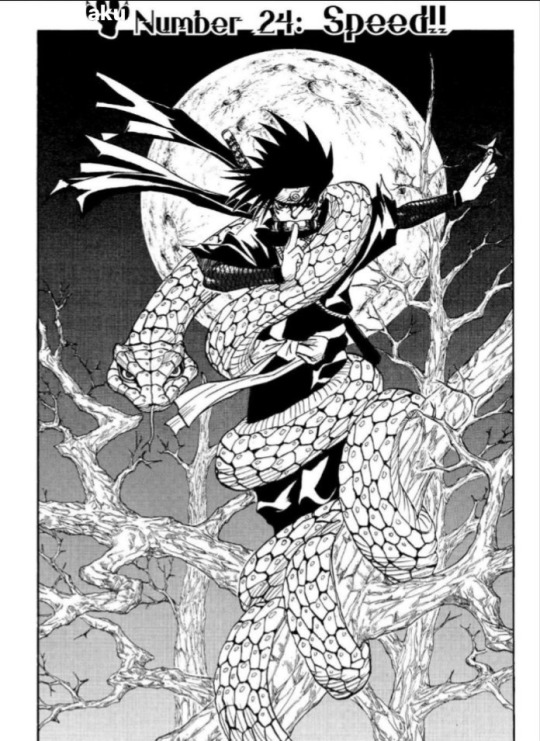
64 notes
·
View notes
Text
A side note about Japan and queerness: I wrote a thesis about the history of homosexuality in Japan in uni, so I feel qualified to comment on it. Gay and trans identities were absolutely not invented in English speaking countries in the 20th century, they are the ones who invented homophobia. Japan in the middle ages and up until the end of the 19th century was extremely gay and had a very open gay culture, bisexuality was considered the norm. The samurai, who were the ruling class were extremely gay and Buddhism didn't have any history of homophobia, so both the dominant religion and the political elites were not homophobic and were encouraging same sex relationships among men. Japan not being super queer is a fairly recent (20th century) development. The terms that were used back then to describe queerness were also different and it is not useful to try and describe these identities with modern terms, but if you look at old primary sources, then there was probably a lot of conflating of what we would today call trans and gay. Japan is not a pure desexualized heterosexual place from a shoujo manga. If anyone wants to read more, I would recommend the book "Male Colors: The Construction of Homosexuality in Tokugawa Japan" by Gary P. Leupp. (there are also a bunch of other good sources, but this is the one I would recommend first). So yeah, don't let the weebs tell you you are pushing an LGBT agenda on Japan, the period of Japanese history in which homosexuality and transness were considered normal is way longer than the non gay period.
youtube
#pokemon#trans#gnc#gender nonconforming#non binary#transmasc#transfem#paldea#pokemon go#penny#sylveon#team rocket#japan#samurai#tokugawa#Youtube
81 notes
·
View notes
Text
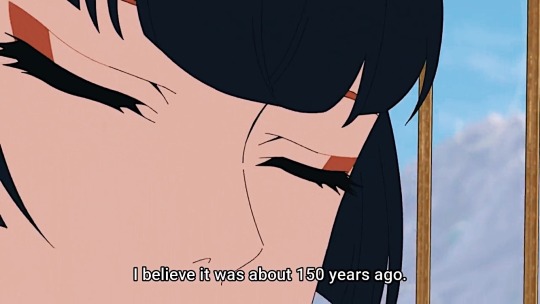
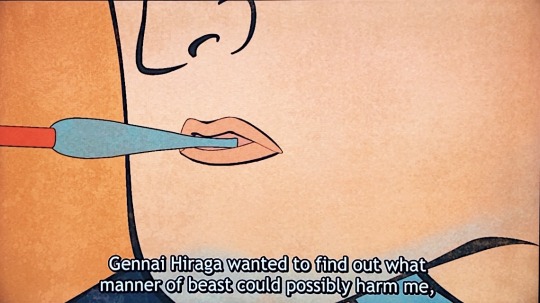
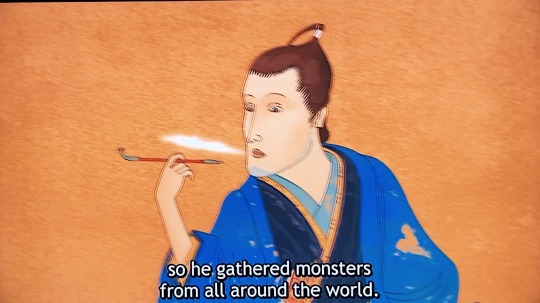
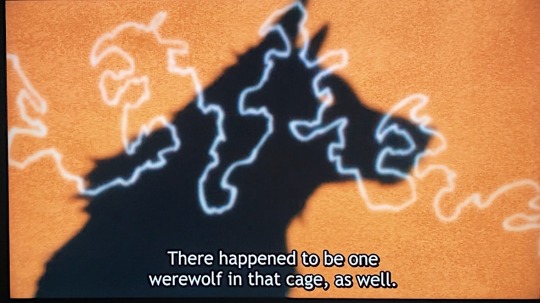
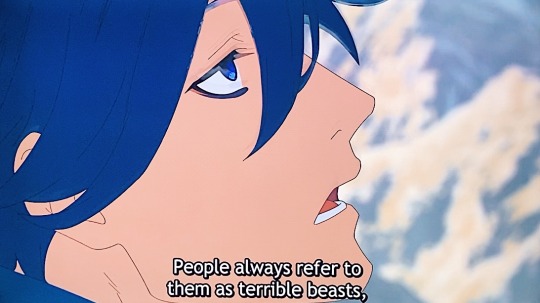
Gennai Hiraga.

Of all the name-droppings the series has been doing, so far they do it exceptionally well when it comes to Japanese folklore and historical personages.
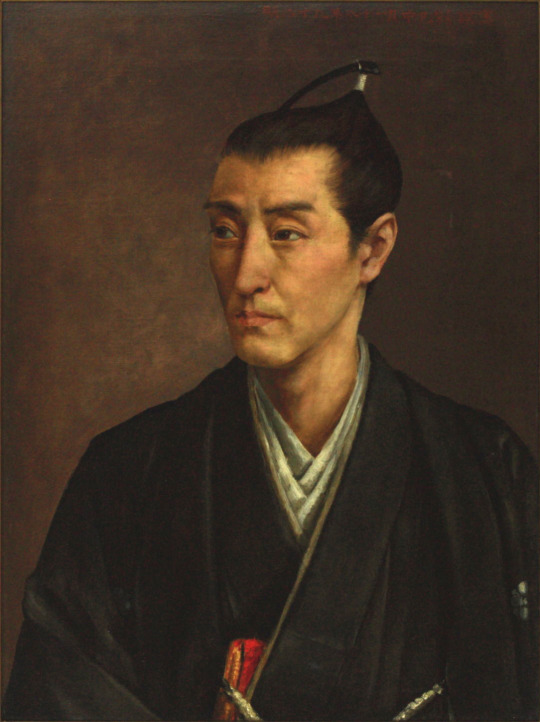
Hiraga was a real person. Now, what’s so interesting about him is that not only he came from a low-ranking samurai family during the Edo Period, he was also a polymath, a rōnin (wandering samurai) a doctor, a pharmacologist, an inventor. Most of all, he was purported to be a homosexual. He frequented the brothels that showcased male prostitutes.
Hiraga (1726-1779) was a prominent Rangakusha (scholar of "Dutch"-i.e., European-learning) and botanist who conducted experiments with asbestos and electricity. He was also one of the most popular writers of the late Tokugawa period and a regular patron of the male brothels referred to as kodomo-ya. His friend, the leading scholar Ota Nanpo, recorded that "when [Gennai] had money, he hurried to spend it in Yoshicho on the pleasure-boys. There he would spend days at a time, and that is why he glorified nanshoku in Nenashigusa.
He was also a writer, a satirist to be exact. He also wrote guidebooks on the male prostitution in Japan.
Those who like female prostitutes dislike youths; those who like youths revile female prostitutes. — Hiraga Gennai, “San no asa” (1768)
…
Gennai himself, according to Ota Nanpo, often visited Yoshicho and the "southern wards" of Edo, with their nanshoku teahouses, but never went to Yoshiwara, with its female prostitutes. His biographers claim the scholar was not simply a shudo-zuki but an onna-girai, or "woman-hater."' Men identified as such, like similar characters in Ming-Qing or even in English Augustan literature, find any contact with the female sex revolting.
…
For the benefit of such culturally deprived men, Gennai lightheartedly describes the nanshoku-jaya experience, including its thrills and frustrations: “Stroking his patron's arm, [a male prostitute] will strike a dreamlike pose, as though he is himself reaching heights of ecstasy. He'll make endless, capricious vows,i and address you with the most intimate names. [Tears] will appear about the eyes on his dazzled face. Aara, that's strange! Is this some apparition? A group [sent from] his manager!k Yai! Those of you who love sweets might find this amusing. But don't laugh. It'd be the gravest mistake not to eat up all those crumbs. You might start taking a liking to wine!”
One of his works dealt with farting and a story about a Kappa “that tries to seduce the actor and then attempts to drown them, in order to complete their task. In the end the Kappa ends up falling for the young actor and instead brings back a less attractive Onnagata as a consolation prize.”
Kappa is a type of a water sprite in Japanese folklore.
Mischievous by nature, they loudly pass gas in public and love to peek up women’s kimonos. Sometimes their mischief turns violent. Kappa have been known to kidnap or rape swimming women, and kill people. A kappa’s preferred method of attack is to drown its victims, or bite them to death under water. Kappa also devour humans alive. Usually they go for the rear end to get at the shirikodama, a mythical ball of flesh located just inside the anus.
Anyway, Gennai Hiraga is indeed an interesting person. The episode tied him up nicely emphasising his Jack of all trades-esque personality.
Source: “Male Colors: The Construction of Homosexuality in Tokugawa Japan,” Gary P. Leupp
#undead girl murder farce#undead murder farce#aya rindo#tsugaru shinuchi#shizuku hasei#episode 9#werewolves#gennai hiraga#ugmf spoilers
51 notes
·
View notes
Text

✔ Mark Your Calendars: Fri Sept 29 on 🎨#JamieRoxx’s Pop Roxx Radio 🎙️#TalkShow and 🎧#Podcast w/ Featured Guests:
#DannyMadden, #Director (#15Cameras | #Movie, #Horror)
☎ Lines will be open (347) 850.8598 Call in with your Questions and Comments Live on the Air.
● Click here to Set a Reminder: http://tobtr.com/12271708
Pop Art Painter Jamie #Roxx (www.JamieRoxx.us) welcomes Danny Madden, Director (15 Cameras | Movie, Horror) to the Show!
(Click to go there) ● IG: @15camerasmovie ● IMDB: www.imdb.com/title/tt28255598
15 CAMERAS COMING TO ON DEMAND ON OCTOBER 13TH ALSO PLAYING THEATRICALLY IN LOS ANGELES via: Gravitas Ventures
Directed by: Danny Madden Written by: PJ McCabe Starring: Will Madden, Angela Wong Carbone, Hilty Bowen, James Babson, Shirley Chen, Hannah Mckechnie, Skyler Bible, Courtney Dietz, Erik Leupp, Donna Allen, Brianne Moncrief, Jim Cummings, Stephen Ruffin
When Cam and Sky bought their duplex, it seemed like the perfect investment opportunity for the young couple; a starter home, a mortgage offset by renters, and even a guest room for Sky’s sister, Carolyn. But as Sky and Cam slowly uncover hidden cameras and secrets of the duplex’s previous owner, obsession consumes their marriage and they both fall into destructive forms of voyeurism. When new tenants move in downstairs, their fixation with observing others has deadly consequences and they are forced to confront the very things they have been consumed by.
● Media Inquiries: October Coast PR www.octobercoastpr.com
3 notes
·
View notes
Text
Day 11, Tues June 6: Flagstaff Arizona, Navajo Territories, Gallup New Mexico, and Durango Colorado. 565 km
Route 66 intertwines with the Interstate 40 east of Flagstaff, so I turn to Garmin for some back roads. I end up taking the Leupp Road and Hwy 264 through the Navajo Territories. What a morning, what an experience. The Navajo Territories cover 27, 500 square miles over Arizona, Colorado, Nevada, and New Mexico. Unbelievable clouds, scenery, buttes, mesas, and hard dessert landscapes. You have to be tough to carve out a living here. There is so much remoteness, some areas with no power, just a tough, vast, beautiful landscape.
Another early start, I make it to Gallup, New Mexico, in four hours. Arizona does not observe DST. The Navajo Nation, however, does so it caught up with me today and cost me an added hour, so I get there just before noon.
The ride north from New Mexico to Colorado on Hwys 491, 371, and 140 again take me through the Navajo Territories. On the way, I pass herds of horses, sheep, and cows and one classic shot of a male Llama standing on a butte looking over his herd. And over head, the beautiful New Mexico sky.
As I traveled north, I start seeing more irrigation and greenery, enabled in part by perhaps better soil but almost certainly by the higher elevation and cooler temperatures.
As I pass into Colorade (no welcome to Colorado sign, just to the Southern Ute Indian Reservation), the climb continues. No irrigation here. Colorado is just naturally higher, cooler, wetter, and greener.
Beautiful green mountains and valleys, along with distant snow-capped mountains, tell me I have definitely left the desert and entered the highland region.
As I come back from dinner, the clouds start to darken. It's been a long day, and I turn in, to the sound of falling rain.










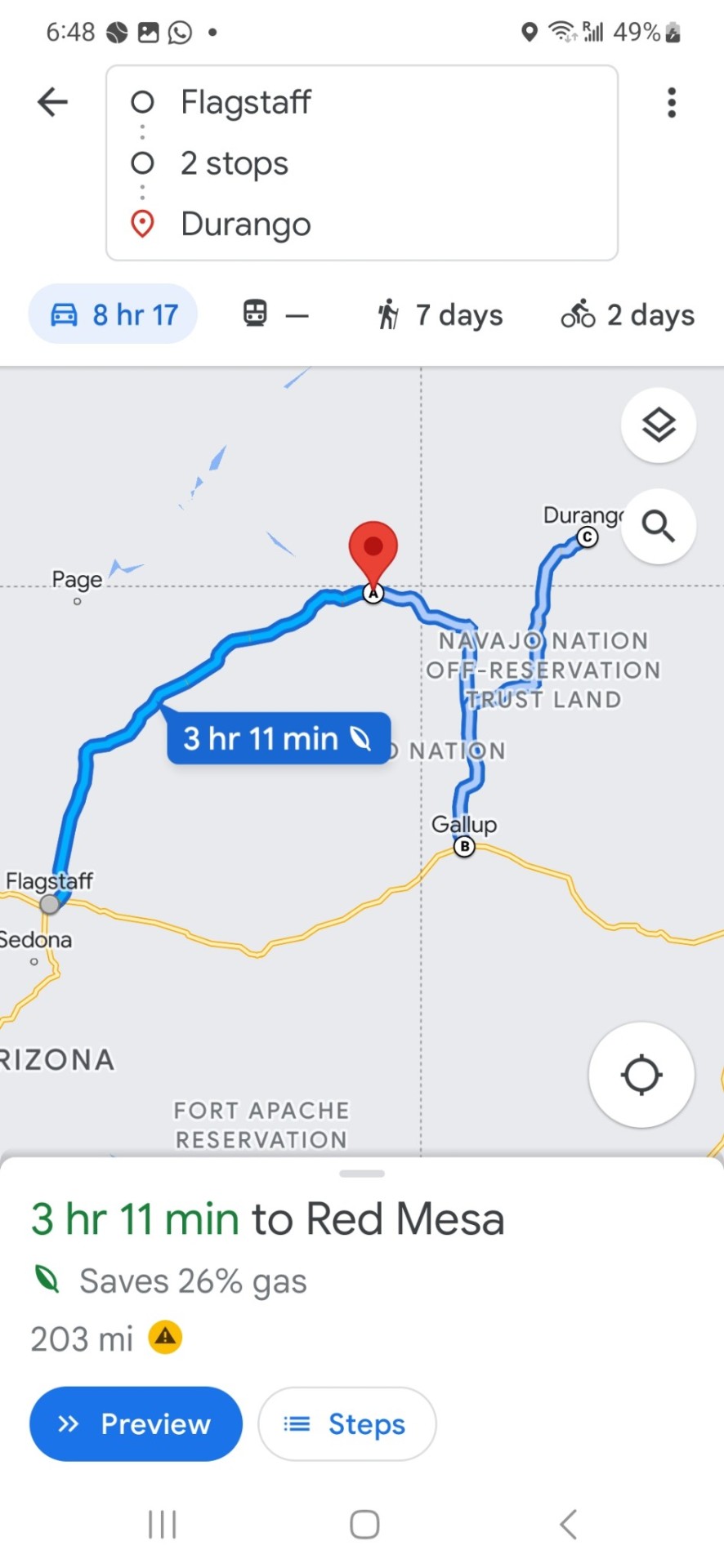
2 notes
·
View notes
Text
2 notes
·
View notes
Text
15 Cameras (2023)
15 Cameras (2023) #DannyMadden #WillMadden #AngelaWongCarbone #HiltyBowen #JamesBabson #ShirleyChen Mehr auf:
Jahr: 2023 (Oktober) Genre: Horror Regie: Danny Madden Hauptrollen: Will Madden, Angela Wong Carbone, Hilty Bowen, James Babson, Shirley Chen, Hannah Mckechnie, Skyler Bible, Courtney Dietz, Erik Leupp, Donna Allen, Brianne Moncrief, Jim Cummings, Stephen Ruffin … Filmbeschreibung: Als Sky (Angela Wong Carbone) und Cam (Will Madden) ihr Zweifamilienhaus kauften, schien es die perfekte…

View On WordPress
0 notes
Text

Coco Peru is one of the drag queens featured in Wigstock (1995). Coco was born Clinton Leupp and has 32 acting credits from a 1994 Cyndi Lauper video to 13 episodes of a 2022 series. This is her second honorable mention, after To Wong Foo Thanks for Everything Julie Newmar.
Her other notable credits include episodes of New York Undercover, Arrested Development, How I Met Your Mother, The Browns, and seven episodes of Will and Grace.
0 notes